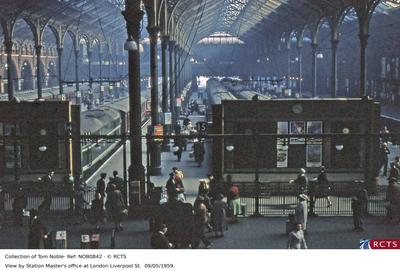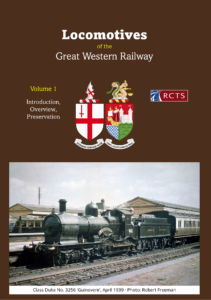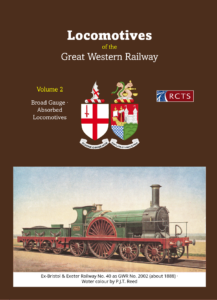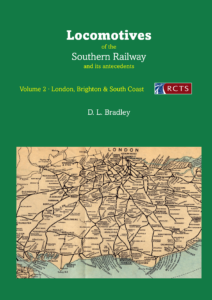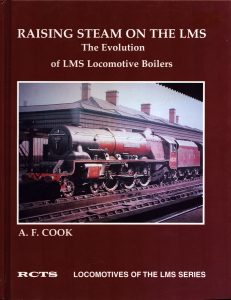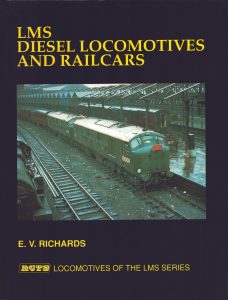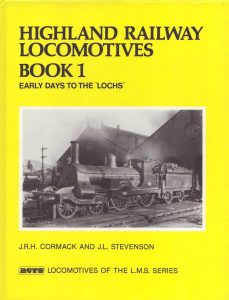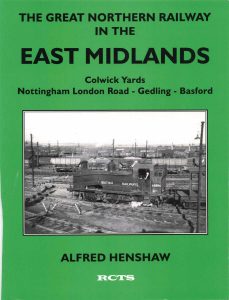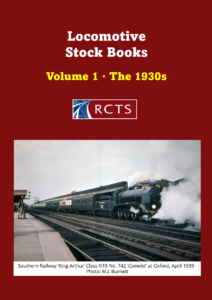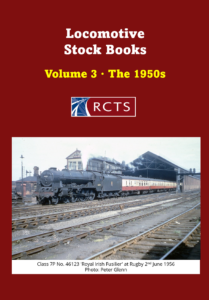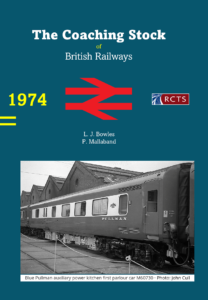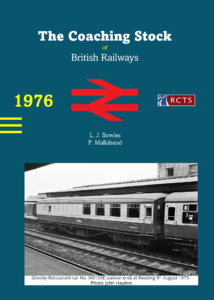The RCTS Digital Archive
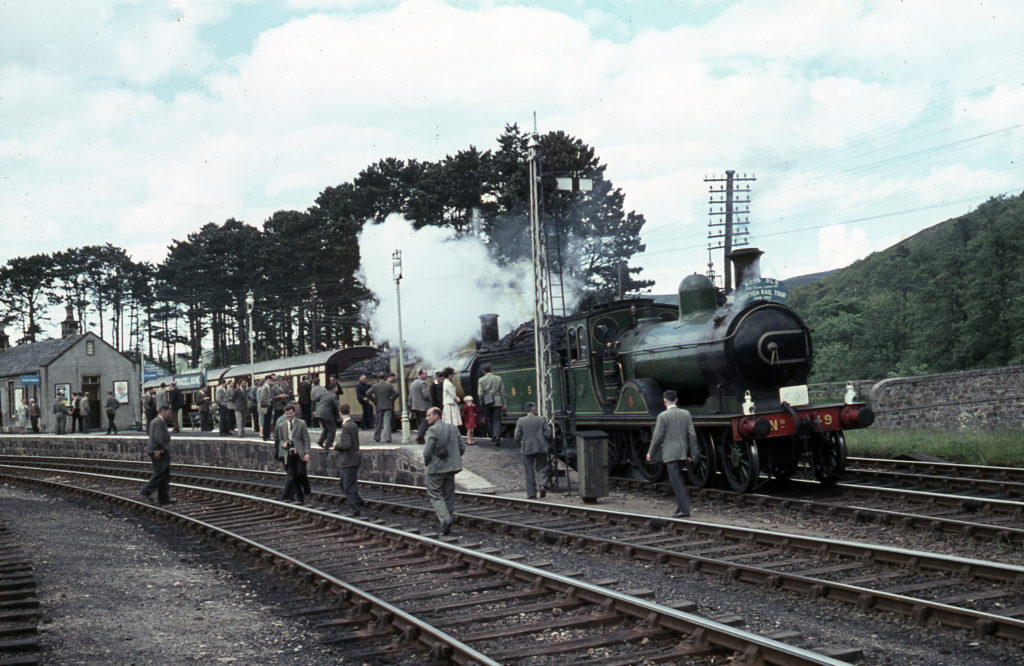
The Digital Archive
The Railway Correspondence & Travel Society (RCTS) has been publishing definitive locomotive histories, stock books and the like since 1935. As most of them are out-of-print, the Society has decided to re-imagine them for the digital age.
The RCTS Digital Archive seeks to republish the content to suit different types of users, wherever they may be and whatever digital device they may use. It is possible to buy some of the material in traditional book form but the archive is mainly designed to support online reading and downloading.
The RCTS Digital Archive is available to registered users. Registration is free. Please sign in each time to view the collections.
Scope
The archive was launched in September 2022. The initial scope was:
- Locomotives of the LNER - originally a 19-part series published 1963-1994
- The Railway Observer - the Society's monthly magazine, 1,004 editions 1928-2011
Added in September 2023 were:
- Locomotives of the GWR
- Locomotives of the SR and its antecedents
- Locomotive stock books
- Carriage stock books
October 2024 saw the addition of the remaining back catalogue, including:
- Locomotives of the LMS (those items that are out-of-print)
- Locomotives of the Great Northern
- Individual locomotive histories
- Localities
- Traffic surveys

Contact
The Admin for the archive is best reached by email:
![]()
Financial support
The archive relies on shop sales and donations for all its income.
We have set up a scheme whereby users can make one-off donations, enhanced in the UK by Gift Aid for eligible donors. Please click Donate to learn more:
RCTS Members: You should also please register.
We have adopted a self-registration scheme separate from the membership logins.
It enables the Archive to also be made accessible by non-members, in support of the Society's charitable objectives.
Click the headings below to open/close
Each section describes the reading and purchase options available:
- All books and magazines are available to purchase as PDFs to read offline
- The Railway Observer and Locomotives of the LNER series can be read online free of charge *
- All photographs can be viewed online at full resolution *
- Items in the RCTS Photograph Collection can be purchased as JPGs or prints
- Selected books can be purchased (as reprints) from Amazon.
* Registered users only
The Society owns the rights to various collections of original slides, negatives, and prints which have been donated and bequeathed to the Society. Many – but by no means all – have been digitised and captioned and are available to view and purchase.
Approximately 57,000 images are available via Search and Buy. The spreadsheet-like tool enables you to find specific imagery or simply browse. A random selection of images will be selected each time you open the screen. The full-resolution images are available to view with watermarks (an RCTS logo and a grid overlay) and can be zoomed and panned.
All images are available as JPG downloads (£2 each) or as standard 6x4 gloss prints (£2.50 each). They are supplied with a caption strip at the bottom containing the collection name, a reference code, and the caption. A small RCTS logo appears bottom right.
There is a minimum order value of £5 (excluding shipping for prints) - that is, three digital downloads or two prints. Prints can only be shipped to UK addresses, for which there is a standard charge of £3 irrespective of the quantity. Other items from the RCTS Digital Archive can be added to your basket to make up the £5. Coupons offering discounts may be available at various times.
Other print options (including non-UK shipping) are available directly from our print supplier One Vision Imaging Ltd of Coventry. Purchase digital downloads from the RCTS, then upload them to One Vision's portal. Other print options include larger sizes up to 45x30, alternative finishes (including fine art), framing, photo books etc.
The Print collection comprises commercially produced prints and postcards donated and bequeathed to the Society, and prints of photographers’ own work. Copyright is mixed, with some owned by RCTS but most not.
Registration with the RCTS Digital Archive is required and is the equivalent of obtaining a Readers’ Card to view the online archive for personal research purposes. There is no facility to purchase or download the images.
Approximately 52,000 prints are available to view front and back.
You must be registered and signed in to view the RCTS Print Collection.
The archive is organised as per the storage boxes held at Leatherhead, which are mostly by subject matter although sometimes by collector or photographer. Captioning is not fully available, thus limiting the ability to search within each storage box. Tools are provided to enable you to view the front and back simultaneously and to re-orient the image if necessary. Captions can be added by any registered user, either based on the notes written on the back or from your own knowledge. There are guidelines on writing good captions to make them searchable.


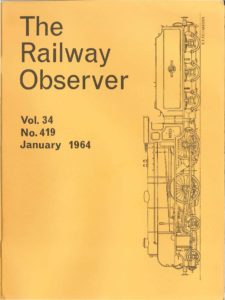
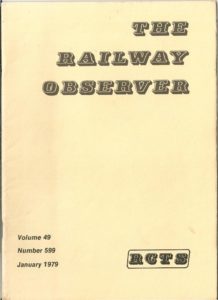
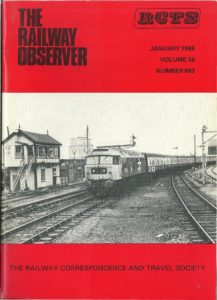
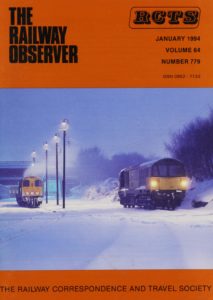
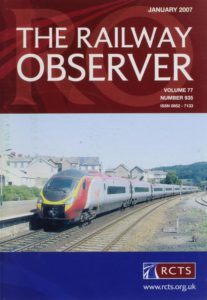
The magazine
The Society was formed in Cheltenham in 1928 and has published a monthly magazine ever since. There was no break during the War years and during the first Covid lockdown (2020) the magazine was published online first and printed later.
The Railway News was the first name, launched in May 1928, and ran to ten editions before a copyright issue was identified with that name. The magazine was relaunched in March 1929 as The Railway Observer and has now surpassed 1,100 editions.
The RCTS Digital Archive contains editions up to Volume 81 (2011). Online editions from 2012 onwards are available free to Society members (only) in the RCTS members area.
Reading options
PDF files are available to purchase and download for your personal use, and must not be shared. Each download contains an index and 12 editions (or 24 editions in the War years), and maybe some extras e.g. fixtures lists. Every page contains a small RCTS logo. There are also bundles available covering multiple volumes.
The purchased PDFs are searchable and you can copy-paste sections from them. The OCR is not perfect.
Individual editions are available to read online free-of-charge. They are intended for browsing, are not searchable, and copy-paste is not supported.
Index
Each purchased volume contains an index. There is also a complete index covering all years 1928-2021 available as a free download as a single PDF file.
Warning: The file is over 600Mb and runs to 1,393 pages.
The LNER
The LNER existed between 1923 and 1947. It was formed in the aftermath of the 1914-18 War by grouping seven leading companies that operated railways along the eastern side of the island of Great Britain. The centenary of its creation is 2023.
An eclectic mix of locomotives was acquired from the forerunner companies. A talented cohort of engineers was assembled under Chief Mechanical Engineer Sir Nigel Gresley and went on to stamp its mark on the LNER’s fleet.
The LNER came to an end after 25 years with Nationalisation of the railway in the aftermath of the 1939-45 War. It then took 40 years from inception in 1954 for members of RCTS to complete the definitive locomotive history for the LNER.
Locomotives of the L.N.E.R.
Locomotives of the L.N.E.R. - colloquially known as the "LNER green books" - was published by the RCTS in 19 parts 1963-1994.
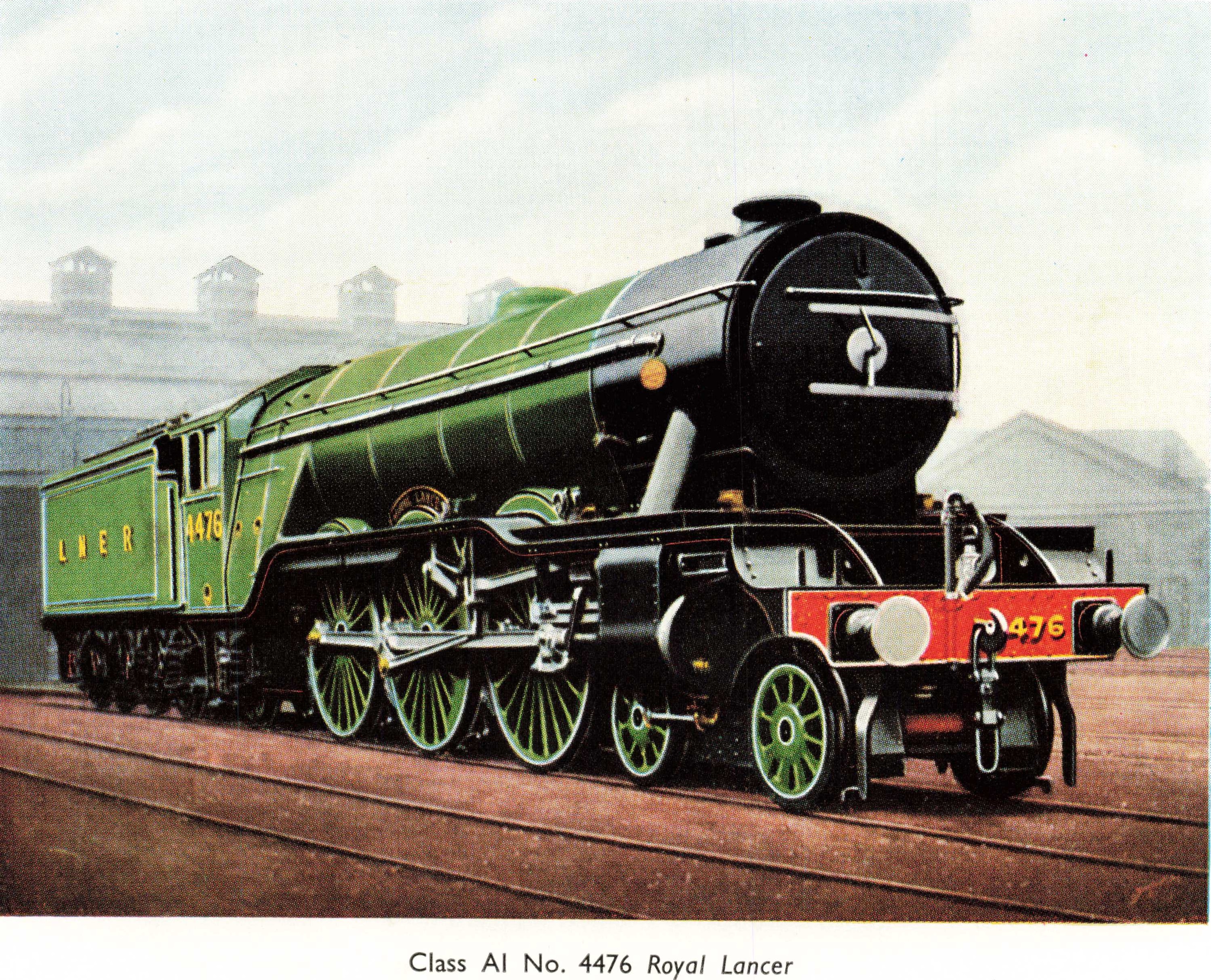
The text and images are presented as-is and will not be updated. Use the commenting system to supply corrections.
Background
It was a unique voluntary endeavour by a team of researchers and writers under the dedicated leadership of Eric Fry.
At the time Part 1 was published in 1963 as the Preliminary Survey, there were still a few ex-LNER engines in operational service. It was envisaged that 10 volumes would be sufficient to complete the series:
“Within the compass of these ten volumes an attempt will be made to describe in detail the history of the 10,000 or so locomotives owned at one time or another by the L.N.E.R. and the work they have done. The articles on individual locomotive classes will be on a uniform basis covering the full history of all engines, including details of origin, leading dimensions, dates of construction, rebuilding and withdrawal of each engine, together with sections covering detail variations, classification, engine diagrams and allocation and work. Photographs of each class and variations will be included.
For a number of reasons, the parts will not be published in a numerical sequence but a complete numerical index will appear in Part 10.”
19 parts later, the series was completed in 1994. Some parts sold in their thousands and were reprinted often, but all had progressively gone out of print.
The books
A definitive locomotive history, such as the 14-part Locomotives of the Great Western Railway, deserves to be readily accessible. It took 42 years (1951-93) to complete the series, and several parts were reprinted, but there was never a time when all 14 parts were in print together. It is now possible to use digital print-to-order and online services to overcome the (mostly economic) limitations of litho print technology to make the full series available at the same time.
The series could originally be collected as a part-work – if you were patient. We have chosen to group the c. 1,950 pages of text and photographs into three larger volumes of 500 to 740 pages in length. The grouping is logical rather than chronological.
Numerous updates and corrections were published in Parts 12, 13, and 14. These have been redistributed to be co-located with the original part. A facsimile is not able to match the production standards of a modern original, but we have done our best. The text has been whitened, blemishes removed, and half-tone images processed into pixels.
The Society President - Rev. Canon Brian Arman - has written a foreword which appears in every volume or file.
Digital downloads
Searchable PDF files are available to download at £15 each for the following years:
- Volume 1 incorporating Parts 1, 12, 13, and 14
- Volume 2 incorporating Parts 2, 3, and 10
- Volume 3 incorporating Parts 4 to 9, and 11
Important: For contents, please read the product descriptions carefully as some sections in the originals have been moved.
For £35, a bundle of all 14 parts (as separate files) is available, saving £10.
Printed books
The following books are available to purchase from Amazon in all the countries they serve. Prices are £25-£30 each from Amazon UK, or the equivalent in local currency elsewhere (plus VAT where applicable).
All volumes are available to order. The following links take you to Amazon UK.
The books
A definitive locomotive history, such as the 11-part Locomotives of the Southern Railway, deserves to be readily accessible. Several parts of this masterwork by D. L. Bradley were revised by the author up to 1985 but all have been out of print for many years. The series differs from the Railway Correspondence & Travel Society’s other locomotive histories by also covering the five main antecedent companies of the Southern Railway at the time of grouping in 1923.
In reissuing these books as facsimiles, the RCTS seeks to present them to a new audience. Later work by others has improved upon certain sections but, taken as a whole, the four volumes remain the premier reference source for the Southern Railway’s locomotive fleet.
A facsimile is not able to match the production standards of a modern original, but we have done our best. The text has been whitened, blemishes removed, and half-tone images processed into pixels.
The Society President - Rev. Canon Brian Arman - has written a foreword which appears in every volume or file.
Digital downloads
Searchable PDF files are available to download at £12 each for the following years:
- Volume 1 · Kent
- Volume 2 · London, Brighton and South Coast
- Volume 3 · South West, including Isle of Wight Railways
- Volume 4 · Post-Grouping
For £36, a bundle of 10 parts (as separate files) is available, saving £12.
Printed books
The following books are available to purchase from Amazon in all the countries they serve. Prices are £30 each from Amazon UK, or the equivalent in local currency elsewhere (plus VAT where applicable).
Not all volumes are available to order yet. The following links take you to Amazon UK.
Several LMS books are still in print and are available to purchase via the main RCTS website.
These out-of-print books are only available as PDF downloads. They include:
- Locomotive and boiler design & construction (2 books)
- LMS diesel locomotives & railcars
- LMS & LNWR locomotive names (2 books)
- Locomotives of the LNWR (1 book)
- Locomotives of the Highland Railway (2 books).
These out-of-print books are only available as PDF downloads.
There are two series available:
- Locomotives of the GNR (Groves) - 4 volumes
- GNR in the East Midlands (Henshaw) - 4 volumes.
The books
The Society began publishing locomotive stock books in early 1935, just a few years after it was formed in 1928. Initially, they were issued as supplements to the Society’s monthly magazine The Railway Observer but later issues were released as independent books.
Information about locomotives - and railways in general – was scarce in the early days. The RCTS was a pioneer in gathering, sharing, and collating data for the benefit of railway enthusiasts, usually via The Railway Observer.
The format of the stock books differed from the tabular layout of Ian Allan’s ABC guides which emerged in the 1940s and were targeted at spotters. The pages of the RCTS stock books were arranged as compact lists, to be used as a reference source for the mature enthusiast.
The Society is now reissuing these historically important reference books as facsimiles. It is not possible to match the production standards of a modern original, but we have done our best. The text has been whitened, blemishes removed, and half-tone images processed into pixels.
Various other supplements, covering locomotive sheds, allocations, and naming, are included where appropriate.
Digital downloads
Searchable PDF files are available to download at £10 each for the following years:
For £30, a bundle of all four books is available, saving £10.
Each file contains multiple original books and supplements. Check the product description for details.
Printed books
The following books are available to purchase from Amazon in all the countries they serve. Prices are £15-£20 each from Amazon UK, or the equivalent in local currency elsewhere (plus VAT where applicable). The different prices reflect the page counts.
All volumes are available to order. The following links take you to Amazon UK.
The books
The Coaching Stock of British Railways was published biennially by the Society from 1972 to 1982, later as a joint venture with Ian Allan Publishing. Using computer printouts from BR as the source, the compilers L. J. Bowles and P. Mallaband presented tabulated lists of hauled stock and multiple units used by passengers, parcels, and various special purposes. The vehicles included restaurants, Pullman lounges, sleepers, Post Office sorting, fruit, bullion, and exhibition vans, the royal train vehicles, and so on.
The data includes classifications, allocations, formations, and detail variations, and was a unique publication at the time. The valuable historical data is now available again as a facsimile.
Lawrie J. Bowles provides a history of the series which is included in every volume or file.
Digital downloads
Searchable PDF files are available to download at £6 each for the following years:
For £27, a bundle of all six books is available, saving £9.
A 1981 book exists but has not been selected for re-release.
Printed books
The following books are available to purchase from Amazon in all the countries they serve. Prices are £10 each from Amazon UK, or the equivalent in local currency elsewhere (plus VAT where applicable).
Not all years are available yet. The following links take you to Amazon UK.
The following categories are only available as PDF files, which you purchase via Shop for PDFs.
- Individual locomotive histories (7 items)
- Localities (11 items)
- Railway Observer extracts (4 items)
- Traffic surveys (7 items)
The RCTS
The Railway Correspondence and Travel Society is Britain’s leading organisation for people interested in all aspects of railways past, present and future and is highly regarded by both professional railway people and enthusiasts, a position it has held since its formation in 1928.
The Society was founded in Cheltenham at a time when there was little official information published about locomotive stock, their allocations or regular duties. The Society set about rectifying this by members writing to each other, the publishing of a magazine and some meetings organised around the country. The growth of the Society was such that it ran the first enthusiasts rail tour in the 1930s but the war years effectively stifled both the flow of information and the growth of the Society.
A generation of post-war youngsters was inspired by Ian Allan to take up train spotting and many of those that stuck with it through to maturity joined a railway society to gain first-hand information on what was going on and to visit sheds in organised groups. The RCTS prospered running frequent shed visits, publishing its magazine The Railway Observer each month, running rail tours and substantially expanding its branch network. Membership reached a peak long after the end of BR steam.
Move on to the present day and the Society is still going strong with approaching 3,000 members. The Society became a Charitable Incorporated Organisation (CIO) in 2016 – number 1169995. The objects of the CIO are to advance the education of the public in the subject of historic and current railway operation by variously defined methods.
The RCTS achieves these objectives by:
- Publishing a monthly magazine The Railway Observer
- Maintaining an interesting and informative website, including providing access to an extensive catalogue of railway photographs, both current and historic
- Publishing well-researched books with detailed historical information relating to all aspects of railway operations
- Supporting 28 local branches across Great Britain, each providing a friendly centre from which a programme of speakers and visits can be arranged to encourage the public to better understand historic and current railway operations
- Maintaining a wide-ranging public library and archive facility at Leatherhead station.

